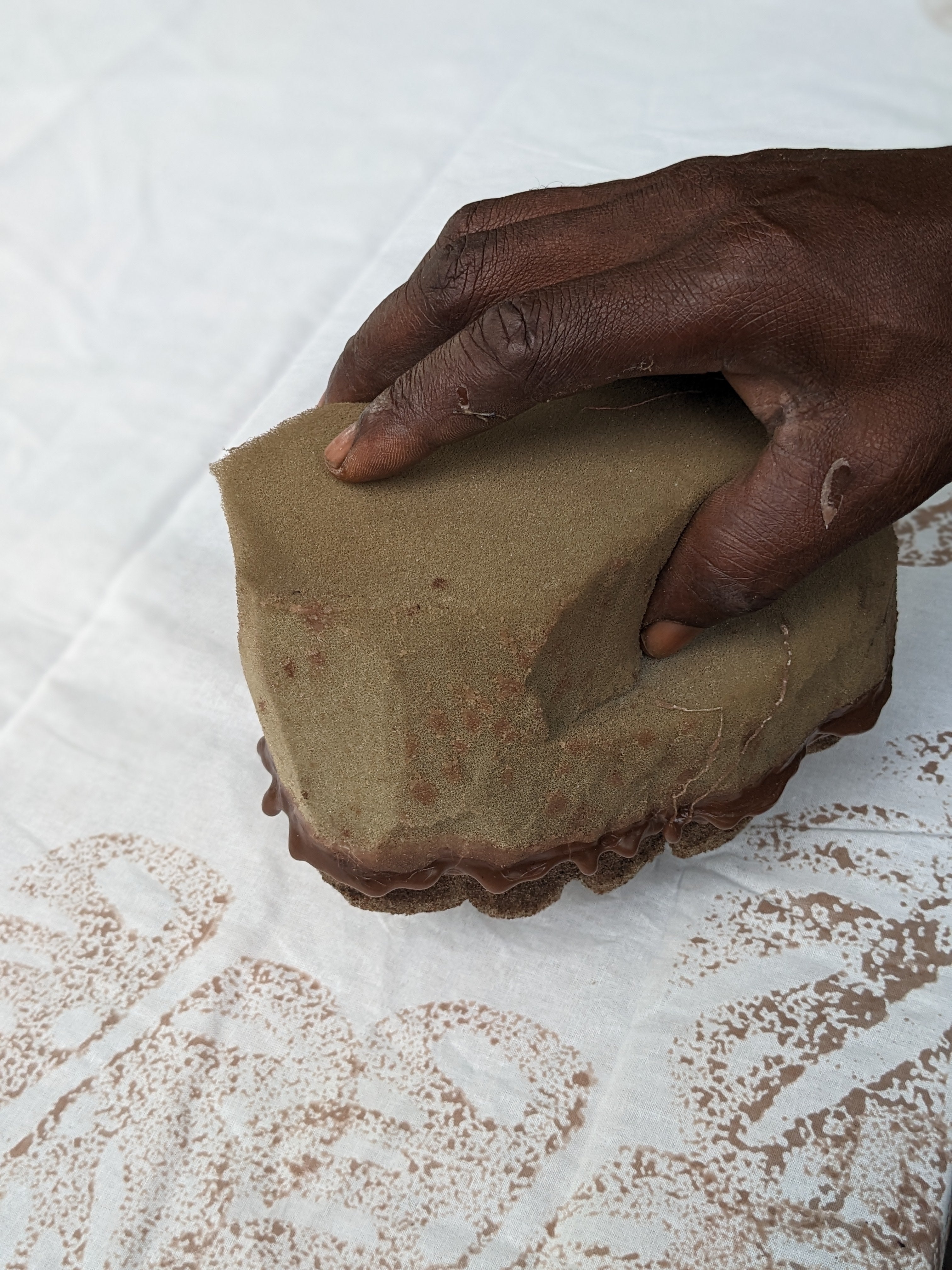Article: Inside the Tampoori Studio - How Ghanaian Batik Is Made

Inside the Tampoori Studio - How Ghanaian Batik Is Made
If you’ve ever run your hand across a Tampoori fabric, you’ve probably felt that slight wax texture, the richness of colour that somehow feels alive. That’s the work of our batik team, and today, I want to take you behind the scenes of how these fabrics come to life in our little corner of Accra.
The Rhythm of Making
Batik in Ghana is equal parts technique and intuition. There’s a rhythm to it. You melt, stamp, dye, repeat and no two artisans do it quite the same way. At Tampoori, we start with pure cotton or rayon, sometimes linen if the weave can handle it. The fabric is washed to strip away starch and oils, giving us a clean surface that will take on colour deeply and evenly.
Then comes the wax. Our batikers led by Anas dip wooden or metal stamps into hot wax, pressing designs by hand across the fabric. Some days it’s geometric, other days it’s a little more free-flowing, depending on who’s holding the tool and what the day feels like. There’s no automation here, no AI. Just a steady hand, focus, and the sound of soft chatter and radio music in the background.
Colour and Chemistry
Once the wax is set, the fabric goes into the dye bath. This is where the magic happens. Ghana’s heat helps because colours bloom faster here. The water, the dye mix, even the mood of the maker influence how the final fabric turns out.
We’re big on bold colour at Tampoori, but we also love to experiment. Favourites in the dye studio include deep indigos, soft lilacs, sometimes ochres that feel like the Ghanaian sun at 5 p.m. Each batch is watched carefully until it feels right. And feel, really is the right word because after years of experience, our artisans can tell when a shade has matured just by sight.
The Reveal
After dyeing, the fabric is dried, then dipped into boiling water to melt the wax. This is hard work by a vat of boiling water but the reward is well worth it. What’s left is a fingerprint of the person who made it; a pattern that feels both deliberate and unpredictable. When you buy Tampoori batik, you can still smell the faint hint of dye and the trace of wax long after it’s pressed, folded, and ready for the shop.
It’s never perfect, and that’s the point. Each piece carries the energy of its maker which is a welcome reminder of our uniqueness in this age of mass production.
The Hands Behind the Craft
When you buy a Tampoori batik, you’re buying more than fabric. You’re buying into a process that’s centuries old, sustained by the hands of Ghanaian artisans who still believe in taking their time.
If you’d like to go deeper into the artistry, you can read The Custom Dyeing Process Explained, a simple walk through the step-by-step stages, or get to know the people who make it all possible in Meet the Makers.


Leave a comment
This site is protected by hCaptcha and the hCaptcha Privacy Policy and Terms of Service apply.